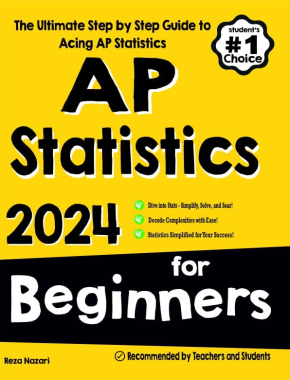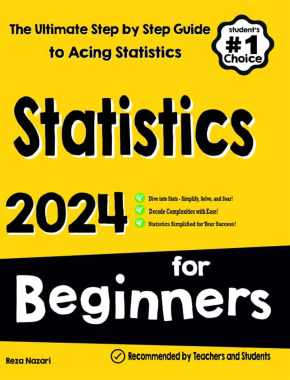The Role of Statistics in Analyzing Sports Performance

The information that is currently available in the competitive sporting arena is not just a set of figures on a scoreboard. It’s a vital tool that helps teams and athletes understand performance, refine strategies, and gain a competitive edge. Statistical knowledge helps coaches and analysts to make informed decisions, including player selection, game tactics, etc.
Data analytics in sports has changed the manner in which games are played and managed. Patterns and trends will help teams to see what is strong and weak in their performance and the performance of their opponents. The given analysis method allows for following a more strategic and efficient way to success.
Besides, statistics are used not only in professional teams. Data is used by amateur sportspeople, coaches, and even fans to improve their knowledge of the game, monitor their progress, and become more involved in sports.
Sports Analytics in the Real World
The statistical knowledge in sports can go far beyond the performance of the players. A more realistic and more evident field is the application of probabilities and odds in sports betting and prediction. An informative Esports Insider overview explains the operations of offshore sportsbooks, which are not tied to state regulations in the U.S. and thus can provide more flexible betting possibilities. The platforms tend to offer earlier lines, greater odds and more payment options, including cryptocurrencies, characteristics that are significantly driven by market forces and statistical considerations.
Yet the utility of sports analytics doesn’t stop at betting markets. Athletic recovery and injury prevention now largely rely on data interpretation. Trainers will be able to predict injuries that could occur by gathering and analyzing player movement, acceleration, and exertion levels. This enables the training intensity or technique to be changed promptly. It results in healthier athletes and extended careers. To an extent, medical teams are even using biometric feedback loops to create rehab schedules that are specific to the physiological response of each athlete.
Analytics have also changed the experience of fans when it comes to sports. Live stats at the touch of a button allow viewers to follow real-time statistics such as player heat maps, shot conversion rates, or ball possession patterns. This data experience creates an interactive experience that deepens fans’ understanding of the games and allows a more informed and engaged fan experience that extends well past passive spectating. Information has made fans analysts, making them more engaged and more knowledgeable around the world.
The Effect of Predictive Modeling in Sports
Sports analytics has come to rely on predictive modeling. Teams can predict performance by using past data and statistical algorithms to determine future performance, evaluate possible outcomes, and make proactive decisions. The strategy is beneficial in preparing games, developing players, and long-term strategic planning.
As an example, predictive models can be used to estimate the probability of a player scoring in a specific position on the field, which can be used to design plays that allow the team to score more. Similarly, teams can predict an opponent’s strategy based on past behavior, allowing for more effective countermeasures.
The application of predictive analytics extends to talent scouting as well. By analyzing performance metrics, scouts can identify promising players who may have been overlooked, ensuring a more comprehensive and data-driven recruitment process. According to a 2024 report by the Institute of Analytics, the integration of advanced statistical models, machine learning algorithms, and predictive analytics has become commonplace in sports. It enables teams to simulate scenarios, anticipate opponent strategies, and optimize training regimens, leading to improved outcomes on and off the field.
Performance Metrics That Shape Modern Sports
Performance metrics are the foundation of any analytical strategy in sports. These metrics go beyond basic stats like points scored or minutes played. They capture more nuanced aspects such as player efficiency ratings, pass accuracy, shot quality, and even mental focus indicators like decision-making speed under pressure.
For example, in basketball, metrics like PER (Player Efficiency Rating) help teams evaluate overall contributions beyond scoring. In soccer, expected goals (xG) models assess shot quality to measure the likelihood of scoring, giving coaches more context than a simple shot count ever could. These kinds of metrics reveal performance patterns that often go unnoticed through casual observation.
Recent studies, such as a report from the MIT Sloan Sports Analytics Conference, show that teams incorporating advanced analytics into their decision-making have seen measurable gains in consistency and long-term success. As these practices become standard across leagues, understanding and applying performance metrics is no longer optional, it’s essential for staying competitive in modern sports.
Frequently Asked Questions
What is a growing pattern?
A growing pattern in mathematics refers to a sequence where each term increases by a set amount from the previous one. This concept is essential in sports analytics, as it can help identify trends in an athlete’s performance improvement or a team’s scoring over a season. For example, analyzing the incremental increases in a player’s scoring average can guide coaches in tailoring training to enhance strengths or address weaknesses. Understanding these patterns enables more strategic decision-making in both training and game situations. Although the specific context of your need wasn’t provided, for a more in-depth exploration of patterns and sequences, you might find this guide on sequences and series helpful.
What is the rule for a growing pattern?
In the context of sports performance analytics, a growing pattern can refer to a trend where a specific statistic, such as shots on goal or assists per game, consistently increases over time. For example, if a basketball player’s scoring average shows a growth from one season to the next, this can indicate improvement in their performance. Identifying these patterns helps coaches and analysts in making strategic decisions to enhance team dynamics and individual skills. While this explanation focuses on sports, the concept of growing patterns is foundational in mathematics and can be explored more deeply in topics such as recognizing patterns in math.
How do you add and subtract mixed fractions?
Adding and subtracting mixed fractions involve a few straightforward steps. First, ensure that the fractions have a common denominator. If they do not, find the least common denominator and convert each fraction accordingly. Then, add or subtract the fractions while keeping the whole numbers separate. Finally, add or subtract the whole number parts. This process is similar to how sports analysts use statistics to break down individual and team performances into manageable parts for better strategy formulation. For a more detailed guide on working with fractions, you might find this tutorial on adding and subtracting fractions useful.
Related to This Article
More math articles
- How to Perform Vector Addition and Subtraction
- How to Find the Constant of Variation
- Vector-Valued Functions: Fundamentals and Applications
- Top 10 3rd Grade IAR Math Practice Questions
- The Ultimate KAP Algebra 1 Course (+FREE Worksheets)
- The Great Math Tour: Exploring the World of Circle Graphs
- How to Multiply and Divide in Scientific Notation? (+FREE Worksheet!)
- Algebra Puzzle – Challenge 42
- How to Calculate the Volume of a Truncated Cone: Step-by-Step Guide
- 10 Most Common 6th Grade ACT Aspire Math Questions
























What people say about "The Role of Statistics in Analyzing Sports Performance - Effortless Math: We Help Students Learn to LOVE Mathematics"?
No one replied yet.